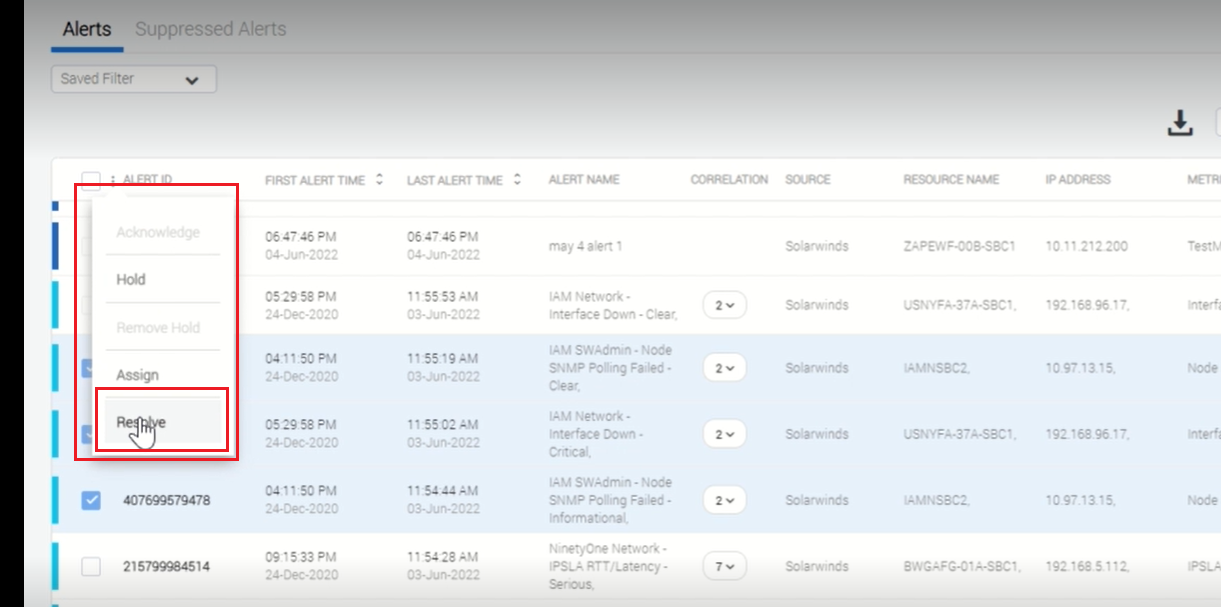AIOps 2.6 release introduces new features for alert noise reduction by limiting the number of alerts in the system. The new features such as dropping duplicates and alert suppression eliminates redundant data to reduce noise and simplify incident investigation for AIOps engineers.
Alerts received which are an exact duplicate of a previously received alert (including alert time) will be dropped from further processing to reduce alert noise.
Some monitoring tools are very 'noisy' and may send a high number of alerts and contribute to alert fatigue for AIOps engineers. Alert suppression is a feature to ensure only the relevant alerts are shown to the AIOps engineers. What is ‘relevant’ can change for each enterprise, so this feature gives admins the flexibility to set up suppression rules specific to their IT landscape.
You may view the suppressed Alerts from AIOps > Alerts > Suppressed Alerts as shown:

The main capabilities are:
APIs to create and maintain alert suppression rules using alert attributes
View suppressed alerts along with search, severity filter and custom query-based filter
Ability for user to promote suppressed alerts to primary alert listing
With the introduction of all the new features, the sequence of various steps from alert ingestion to correlation will be as shown below.
Users can resolve do a bulk 'resolve' action on ticketed alert clusters and provide a common closure note.
To bulk resolve, select the alerts in "Active" status and select Resolve from the  icon as shown.
icon as shown.

Type in the closure note in Closing Comments dialog box and click Add.
Introducing a new operator - 'Not Contains In', which can be used in policy and rule configurations.
The alert download limit in alert listing screen has been increased to 40,000 records. The downloaded file will be in Excel format. Admins can also use the new alert download APIs to download alerts without the 40000 records limit. There are 3 APIs – Request download, check request status, download file.
Users will be asked to confirm before marking a project for delete to avoid accidental project deletes.
 You will be shown a confirmation message to confirm whether to proceed with deletion.
You will be shown a confirmation message to confirm whether to proceed with deletion.
